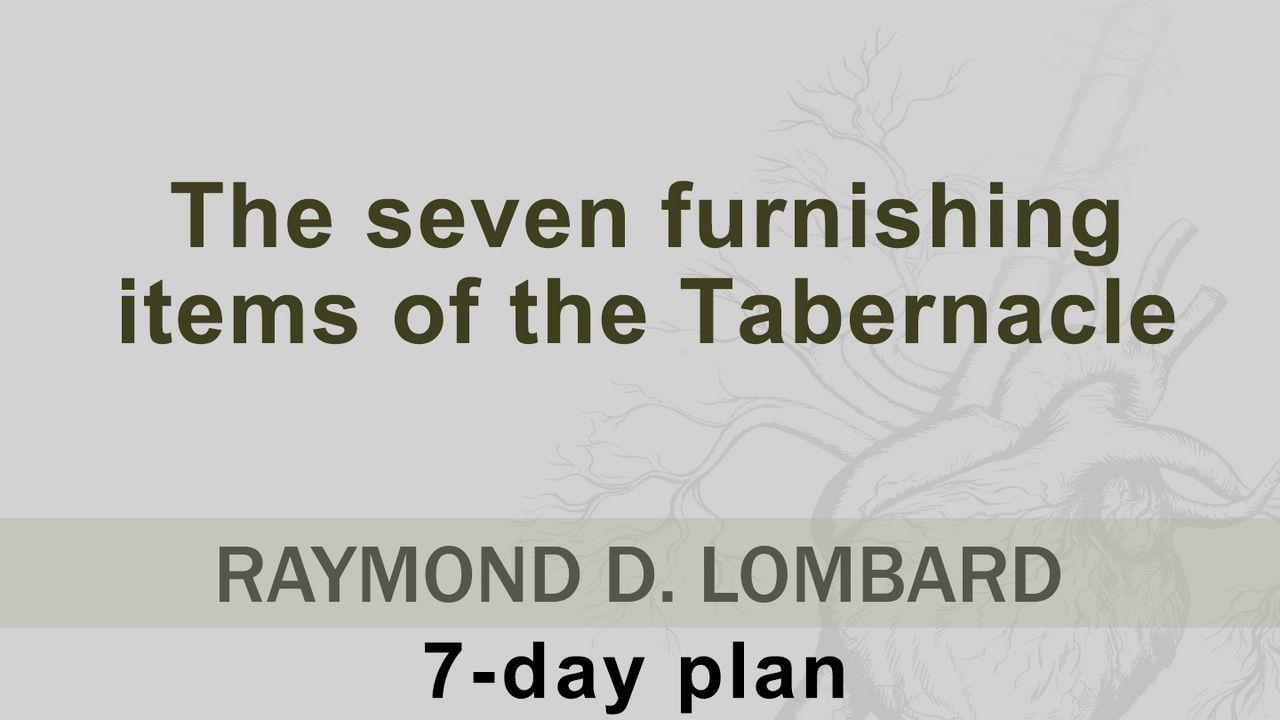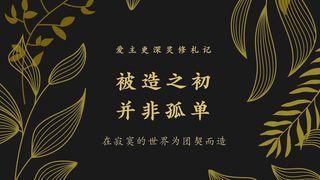The Seven Furnishing Items Of The Tabernacle预览

THE MERCY SEAT
The mercy seat was a symbol of God's throne and his glorious presence. This is the seventh and last item in the tabernacle. God said to Moses: I will appear in the cloud above the mercy seat (Lev 16:2). We find the description of the mercy seat in Exodus 25:17-22.
The mercy seat was a piece of solid gold that covered the ark, while it was at the same time the throne of the grace of God. The Lord said to Moses: “And there I will meet with you, and I will speak with you from above the mercy seat … about everything which I will give you in commandment to the children of Israel” (Exod. 25:22). It was therefore the God ordained meeting place. Secondly, it was the place where the blood of the sin atonement was sprinkled: “He shall take some of the blood of the bull and sprinkle it with his finger on the mercy seat … For on that day the priest shall make atonement for you ... from all your sins” (Lev. 16:14, 30).
The Lord commanded Moses: And you shall make two cherubim of gold; of hammered work you shall make them at the two ends of the mercy seat. (Exod. 25:18). The two cherubim and the mercy seat were made of one piece - it was a unit. The two cherubim were made from hammered work. Hammering makes one think of suffering, destruction and crushing. The cherubim stood on the mercy seat, and were part of it. Their faces, facing each other, were focused on the mercy seat.
With regards to the Lord Jesus Christ, we read in Romans 3:25: whom God set forth as a propitiation by His blood, through faith. The word "propitiation" is the translation of the Greek word hilastērion, which literally means "mercy seat". "Atonement" (hilastērion) therefore means the place where hilasmos or atonement was made. In the Old Testament it was on the mercy seat (Exod. 25:17; Heb. 9:5). If hilastērion (propitiation) literally means "mercy seat" and Christ is our hilastērion or propitiation (Rom. 3:24; 1 John 4:10), then this tells us that Christ himself is the place where the Holy God and the sinful man meet.
Presented in another way, Jesus on the cross was the place where God's righteousness and peace kissed each other (Ps. 85:10); where God was reconciled and satisfied, that through the death of Christ, sin was punished. On the cross, in Jesus Christ, God's love paid the required punishment of his righteousness for the sinner. Because God is now satisfied (propitiated) that sin is punished, He is able to forgive and adopt the sinner that comes to him, not based on mere divine lenience, but on a lawful basis.
The face of the two golden cherubim with outstretched wings, was focused on the mercy seat on which the blood was sprinkled. The celestial beings in heaven, cherubim and angels, are very anxious to know and to see the things that affect the Church of Jesus Christ (1 Pet. 1:12; Luke 15:10; Eph. 3:8-10). The eyes of the two cherubim were constantly looking at the blood. There is no evidence that the blood was ever wiped off the mercy seat. It was stained red with the blood of years of sin offerings. The blood on which their faces were focused, speaks of mercy and forgiveness because of the propitiation. In Hebrews 4:16, believers are urged: come boldly to the throne of grace, that we may obtain mercy and find grace to help in time of need.
The Shekinah glory of God shone in the Holy of Holies, it was where atonement, mercy and grace were to be found. John on the island of Patmos saw the Lamb as if it was slain: And I looked, and behold, in the midst of the throne and of the four living creatures, and in the midst of the elders, stood a Lamb as though it had been slain. . . and I heard the voice of many angels around the throne, the living creatures, and the elders; and the number of them was ten thousand times ten thousand, and thousands of thousands, saying with a loud voice: “Worthy is the Lamb who was slain, To receive power and riches and wisdom, And strength and honor and glory and blessing!” (Rev. 5:6, 11, 12). It is this Christ who, having come as a High Priest of good things to come, through a greater and more perfect tabernacle, not made with hands, that is to say, not of this creation, nor through the blood of goats and calves, but by his own blood, entered once into the Most Holy Place and brought about eternal redemption. For Christ did not enter a tabernacle made with hands, a copy of the real, but into heaven itself, to now appear in the presence of God for us; not to sacrifice himself often, as the high priest did each year when he entered into the sanctuary with blood that was not his own, for then He would have had to suffer often since the foundation of the world. But now He has once in the fulfilment of the ages appeared to do away with sin by his sacrifice: after He had offered one sacrifice for sins forever, sat down at the right hand of God (Heb. 9:11-12; 24-26; 10:12).
As born-again believers we know, and are assured that we can have: boldness to enter the Holiest by the blood of Jesus, by a new and living way which He consecrated for us, through the veil, that is, His flesh (Heb. 10:19, 20).
Right at the beginning of the description of the tabernacle we read that the Lord commanded: And let them make Me a sanctuary, that I may dwell among them (Exod. 25:8). After completion, we read: ... and the glory of the Lord filled the tabernacle (Exod. 40:34).
We can say as Paul said: who also made us sufficient as ministers of the new covenant, not of the letter but of the Spirit; for the letter kills, but the Spirit gives life. But if the ministry of death, written and engraved on stones, was glorious, so that the children of Israel could not look steadily at the face of Moses because of the glory of his countenance, which glory was passing away, how will the ministry of the Spirit not be more glorious? For if the ministry of condemnation had glory, the ministry of righteousness exceeds much more in glory . . . For if what is passing away was glorious, what remains is much more glorious. Therefore, since we have such hope, we use great boldness of speech— unlike Moses, who put a veil over his face so that the children of Israel could not look steadily at the end of what was passing away. But their minds were blinded. For until this day the same veil remains unlifted in the reading of the Old Testament, because the veil is taken away in Christ. But even to this day, when Moses is read, a veil lies on their heart. Nevertheless when one turns to the Lord, the veil is taken away. Now the Lord is the Spirit; and where the Spirit of the Lord is, there is liberty. But we all, with unveiled face, beholding as in a mirror the glory of the Lord, are being transformed into the same image from glory to glory, just as by the Spirit of the Lord (2 Cor. 3:6-9, 11-18).
For more information and studies on the books of the Bible visit Raymond Lombard Ministries
Join us for our next chapter in this “Jesus Christ in the Old Testament” series: Access to the tabernacle.
读经计划介绍

We find two things in the outer court, which we can give attention to, namely, the brazen altar and the laver. Altogether there were seven items, or pieces, of furniture regarding the tabernacle. Two were in the outer court, three in the Holy place and two in the Holy of Holies. We will look at all 7 pieces in this study.
More

